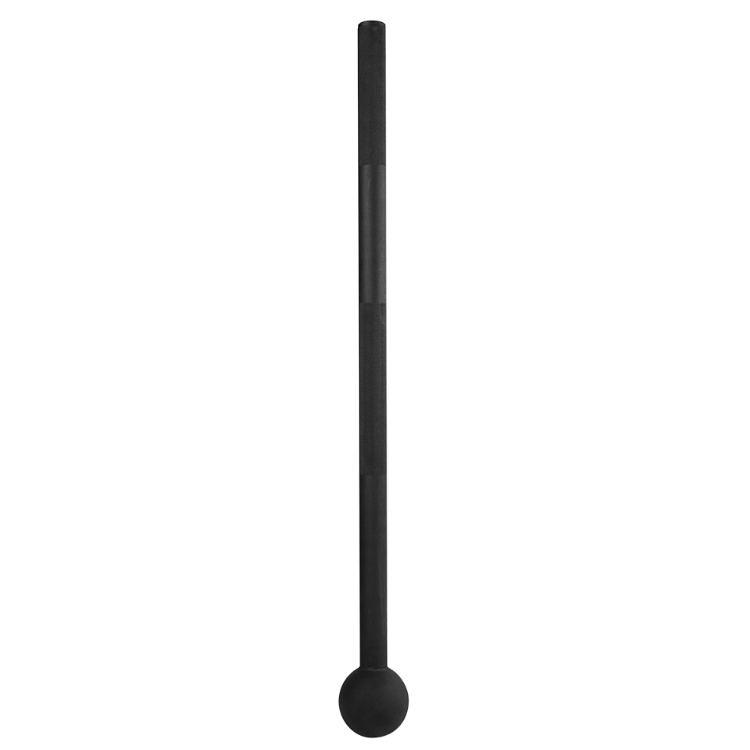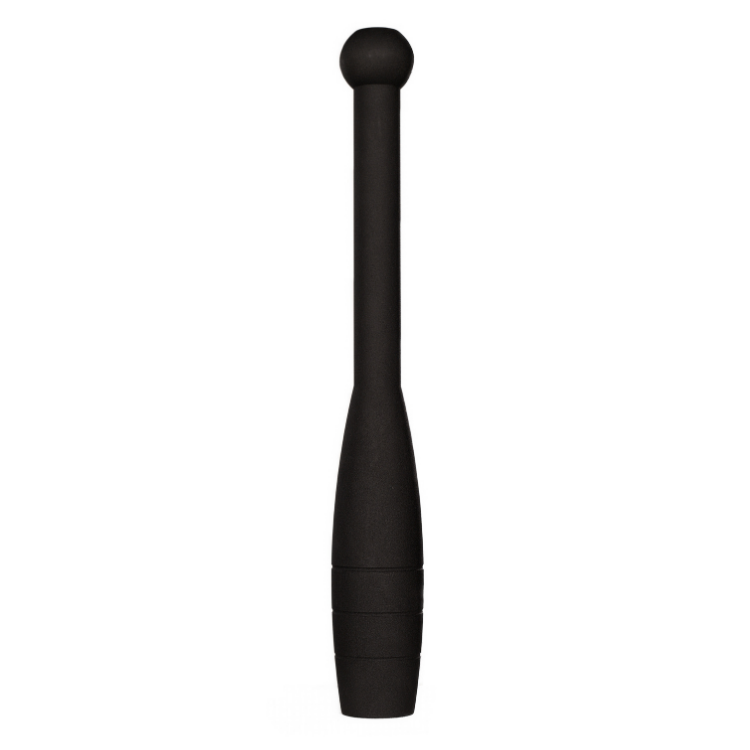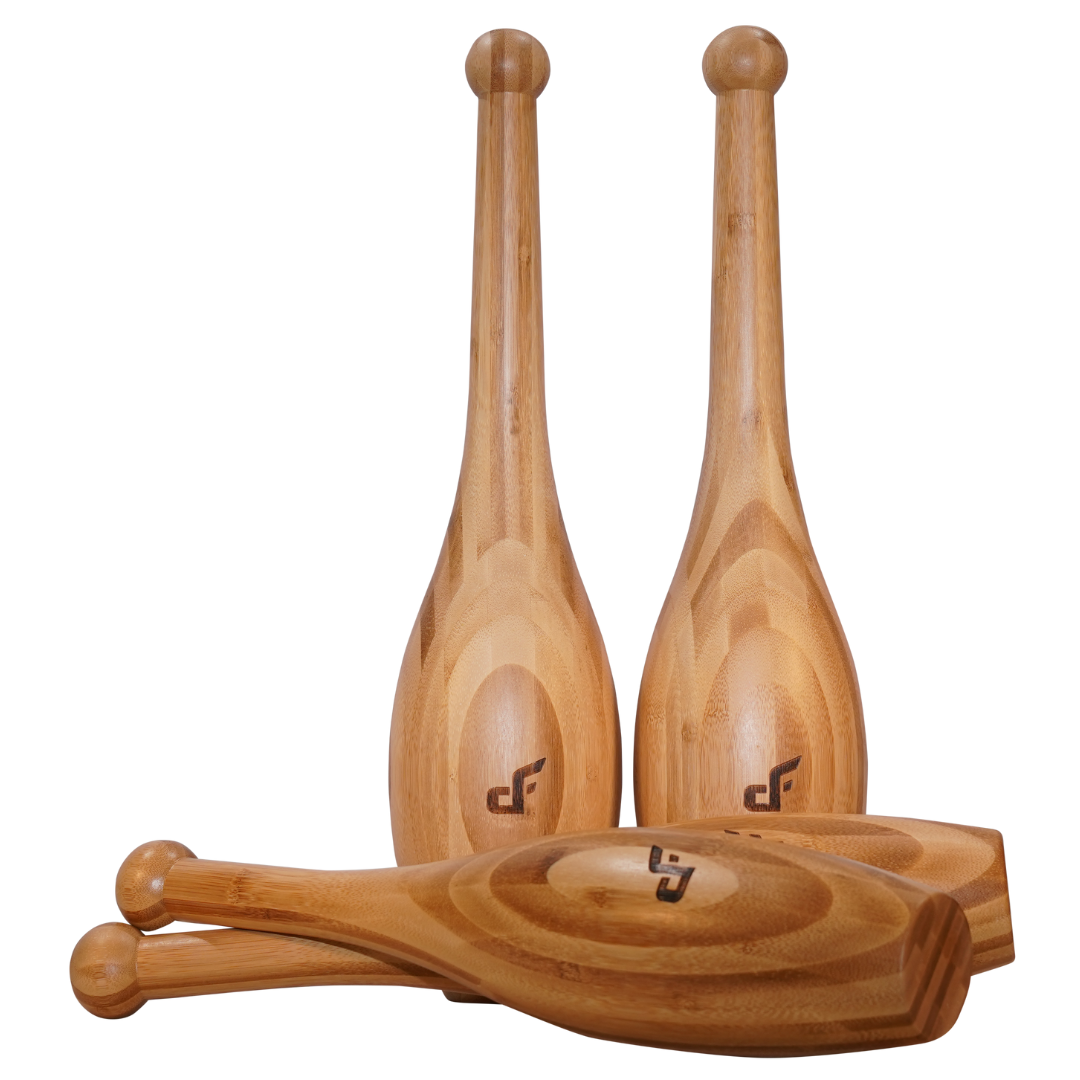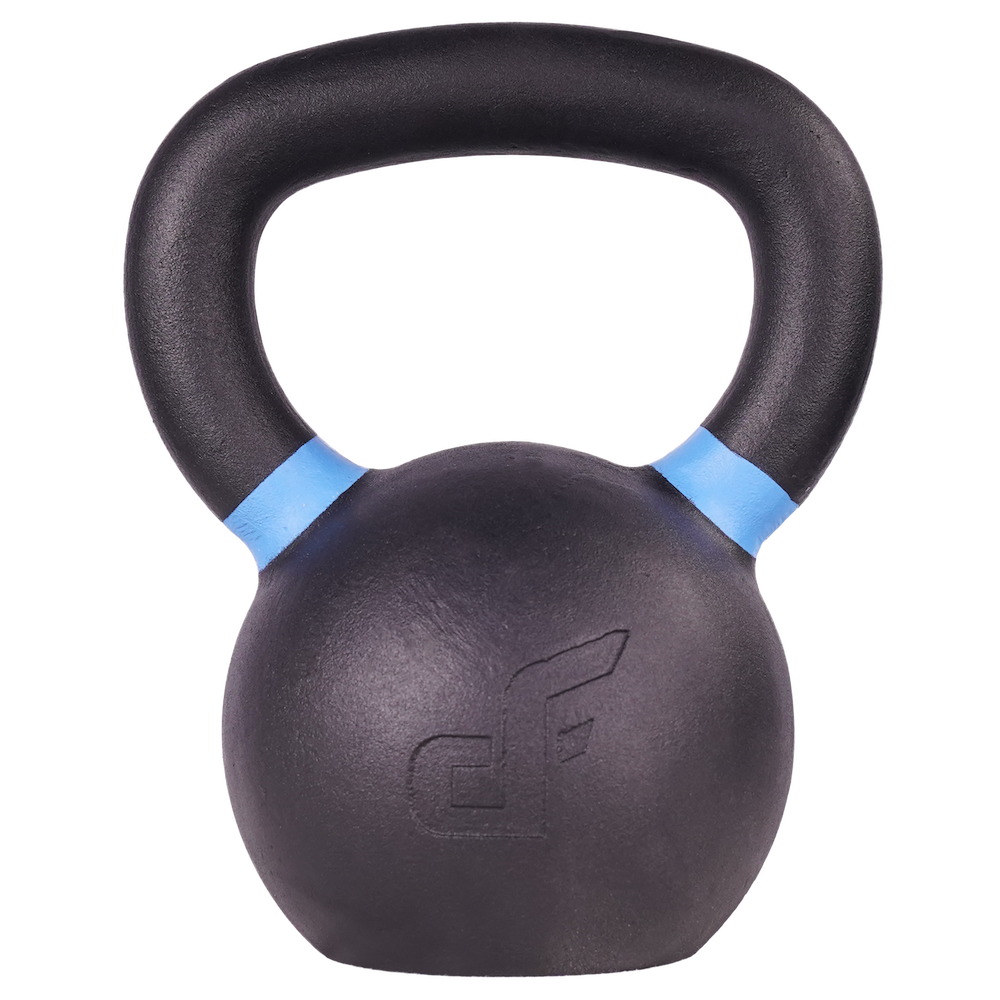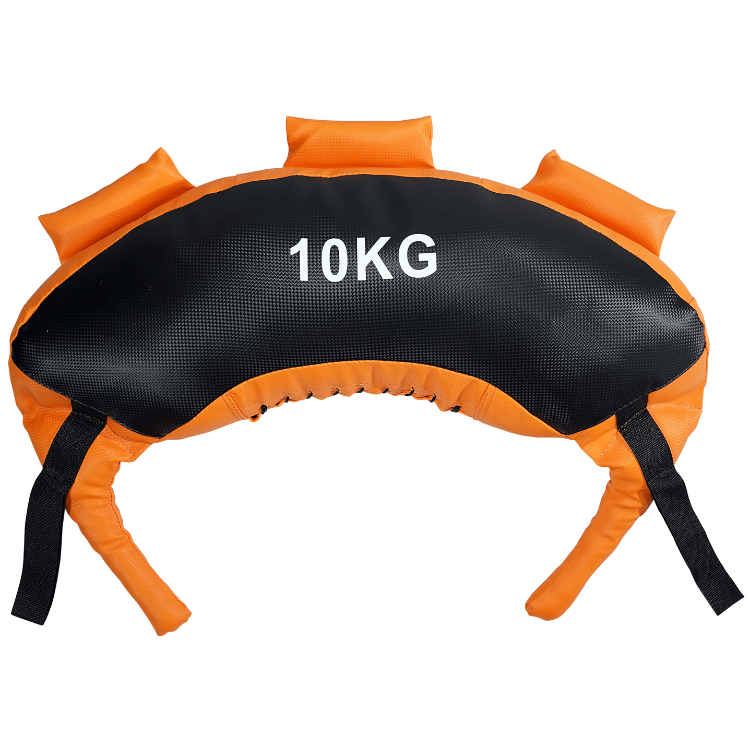Grip one end of the battle rope in each hand about 10cm from the end, holding the end of the rope too closely from the end can cause it to slide through your grip.
Whilst holding the ropes walk backwards until the rope is taught, then take one step forward to create enough slack for the rope to move.
If the rope is too tight it will pull you forward, and you’ll just end up fighting with the rope.
If there is too much slack in the rope, you’ll need to significantly increase the power output and exaggerate the movement to create the undulations through the rope.
There are 4 main gripping positions:
- Handshake grip
- Microphone grip
- Pinch grip
- Double rope grip
Handshake Grip
The handshake grip is the classic battle rope grip and the one you’ll be using the most, this grip will challenge the pulling muscles a little more.
It’s mostly used for exercises where the arms stay at or below shoulder height like double waves, alternating waves and circles and for pulling movements like weighted sled drags and pull ups.
With the rope laying down on the floor pick it up by the ends with your thumbs pointing towards the anchor, the ends of the handles will be pointing towards the body.
Place the rope is in the palm of your hands, wrap your fingers around the rope and secure your grip by positioning your thumb over the fingers.
Note: If you prefer you can also grip the rope like you would a golf club by leaving the thumb off the fingers.
How tight you grip the rope depends on your goals.
If you want to develop maximum grip strength then grip the rope tight, a tight grip will fatigue the forearm flexors quickly though.
If you want to develop endurance and work for longer periods then grip the rope a little looser, a looser grip creates smoother waves with more fluidity and a greater range of motion in the shoulder, elbows and wrists.
Microphone Grip
The microphone grip is the second most used grip and works the forearm muscles a little differently than the overhand grip, this grip challenges the pushing muscles a little more.
This grip also places the wrist in a more neutral position and is useful for exercises that are overhead as it places less stress on the glenohumeral joint (shoulder ball and socket joint).
You might use this grip for bullwhips, diagonal pulls and crazy eights.
With the rope laying down on the floor pick it up by the ends with the rope ends pointing upwards at the ceiling.
Place the rope is in the palm of your hands, wrap your fingers around the rope and secure your grip by positioning your thumb over the fingers or around the rope.
Again, how tight you grip the rope depends on your goals.
Pinch Grip
This grip is the least common grip but can be used for most of the fundamental battle rope exercises.
The pinch grip is very specific and an excellent variation for people needing to develop pinch gripping strength, like rock climbers.
Pick the up the rope with the ends pointing into the palm of your hands.
Then, close your four fingers over the top of the rope and secure the rope in place by gripping the underside of the rope with your thumb.
You’ll need to grip the rope tightly otherwise the weight of the rope makes it very difficult to keep hold of.
This grip is challenging, and you’ll notice a significant difference in the speed and power you’re able to generate using it.
Double Rope Grip
If you want to train your grip the double rope grip is an excellent option.
It essentially puts your wrist in the same position as the overhand grip, the only difference is you fold the rope over at the end to create twice the thickness.

